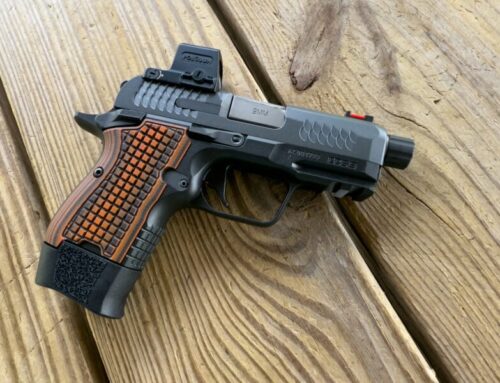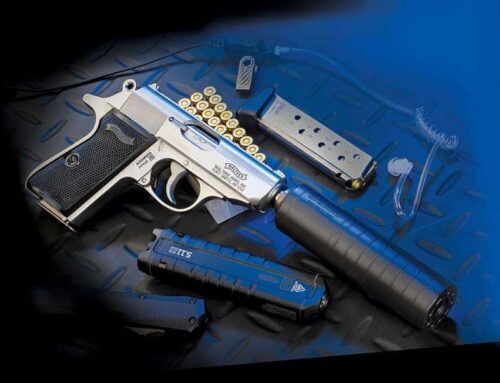
A few of the “spent” 300 AAC Blackout projectiles tested in ballistic gelatin.
Given the level of interest in the 300 AAC Blackout caliber, and my obsession with unusual chamberings, I thought it would be interesting to take a closer look at exactly what the 300 Blackout does. As one of the intents behind the development of this cartridge was to provide better terminal effectiveness when fired from short barrel rifles, I decided to do some basic tests along those lines.
Use of a short barrel configuration as opposed to a full 16-inch rifle barrel will cause a drop in muzzle velocity up to several hundred feet per second. It’s exactly this velocity drop that caused folks to start looking at alternatives to the 5.56mm NATO projectiles. Much of the effectiveness of that round comes with its 3,000 feet per second velocity, so when that drops by 500 feet per second or so, it’s not as effective.

The test platform: CMMG’s Mk4 300 AAC Blackout Pistol
For the rifle platform, I chose a CMMG Mk 4 pistol. This particular model features an eight-inch barrel, which keeps it compact and handy even with a suppressor attached. Speaking of silencers, I fired all of these tests with a SilencerCo Specwar 762 attached. That model handles both supersonic and subsonic 300 Blackout loads with no problem. I also added a Sig SB-15 Forearm Brace and an Aimpoint Micro T-2 optic for effective close range sighting. All in that, this is a nice little package.
I chose a variety of loads for this little experiment with performance ranging from light bullet, supersonic velocity to slow and heavy subsonic rounds. Some are off the shelf factory loads while others are hand loads using common 300 Blackout projectiles. I shot them to measure velocity and through Clear Ballistics gelatin blocks to see what we might expect from different combinations fired from the CMMG 300 Blackout pistol.








Leave A Comment